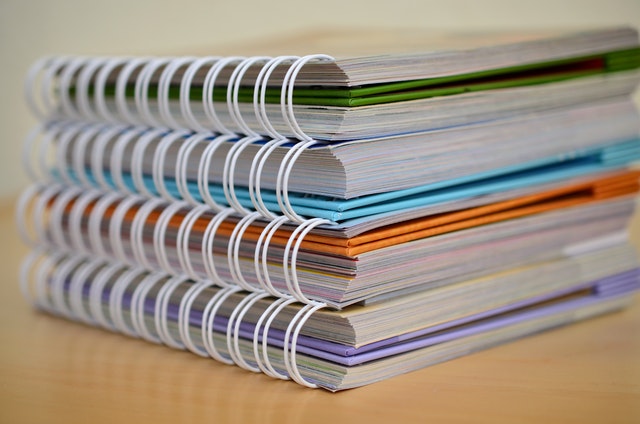Perfect binding with adhesives costs more than conventional hardcover binding, but it’s a better choice if you’re producing a high-quality print and have a high-page count. To qualify, the spine must be several millimeters thick, so perfect binding isn’t a good choice for products with few pages or lightweight paper. However, perfect binding can be used for books with single pages and different types of documents in the inside sections.
Saddle-stitch
The main difference between perfect binding and a hardcover binding with saddle-stitch is the number of pages. Saddle stitching is used for perfect bound books with pages of at least 48 and a maximum page count of 8.5 inches. The binding technique is also popular with books with fold-in pages at the front and back covers. However, this binding style can cause a problem known as “page creep,” which results in the book’s inner pages protruding from the cover page.
Saddle stitch binding is a good choice for thinner books that require more strength than a traditional binding method. It is usually done with two staples per book, but it may need more if the book is a thicker substrate. Saddle stitching is the most affordable option, and it is an excellent choice for books that will not be handled too much. In addition, saddle stitch binding is a perfect option for readers with a thin cover and is often used by children.
Perfect binding
The perfect binding method differs from traditional hardcover binding in several ways. It requires less glue, resulting in less spine distortion. Both types are suitable for hardcover books, but the right choice depends on the final use.
A softcover book can be bound using perfect binding or softcover binding. Perfect binding, or softcover binding, binds pages on both sides of the text-weight paper. The internal pages are then gathered together in numbered page order. Next, a cardstock cover is placed over the inside pages and attached with solid glue. Hardcover binding, however, requires a body with a metal or plastic hinge.
Wire-o loops
To use wire-o loops in perfect binding, you must punch a margin around each page. This is required so that the wire can be inserted properly. The margin size depends on the number of pages, wire gauge, and book thickness. Typically, the margin is one to two inches, but this may vary depending on the project. The text may fall in the critical area if the margin is too small.
Another advantage of wire-o binding is that the pages remain put. The best way to use this type of binding is when you plan to make a bind with tabbed page dividers. Printed tabs are great for reference documents since they make it easier to locate specific pages.
Coil binding
When it comes to bookbinding, the choice of coil-bound or perfect-bound books can be a tough one. While both types of binding have their benefits, their main difference lies in their durability and cost. Coil-bound books allow for a more flat and durable book, while perfect-bound books are more fragile. For further information, read about the different types of binding. The process of coil-bound books involves punching the pages with a coil pattern and inserting and crimping the coil. Coil-bound books can range in price from $500 for manual solutions to $3,300 for automatic machines. For those concerned about costs, coil-bound books may be the best option. However, they are not a good choice for particularly thick books. Coil-bound books are more durable, and they can stand up to rough handling.
Paperback binding
The difference between Perfect Binding and Paperback Binding can be seen in the appearance of books. While the perfect binding is less expensive, it is not as sturdy as hardcover binding. The covers are also typically thicker than the interior pages and have clear coatings. Business publications often use this method of binding for their publications because of its cost-effectiveness and professional look. Paperback and softcover books are usually made this way.
The perfect binding process is popular with non-fiction and fiction writers. Because it is more affordable than case binding, it allows authors to print more books. The spine of a perfect bound book is square and evenly cut so that information can be easily printed on it. Perfect binding is an excellent option for books with up to 400 pages.



